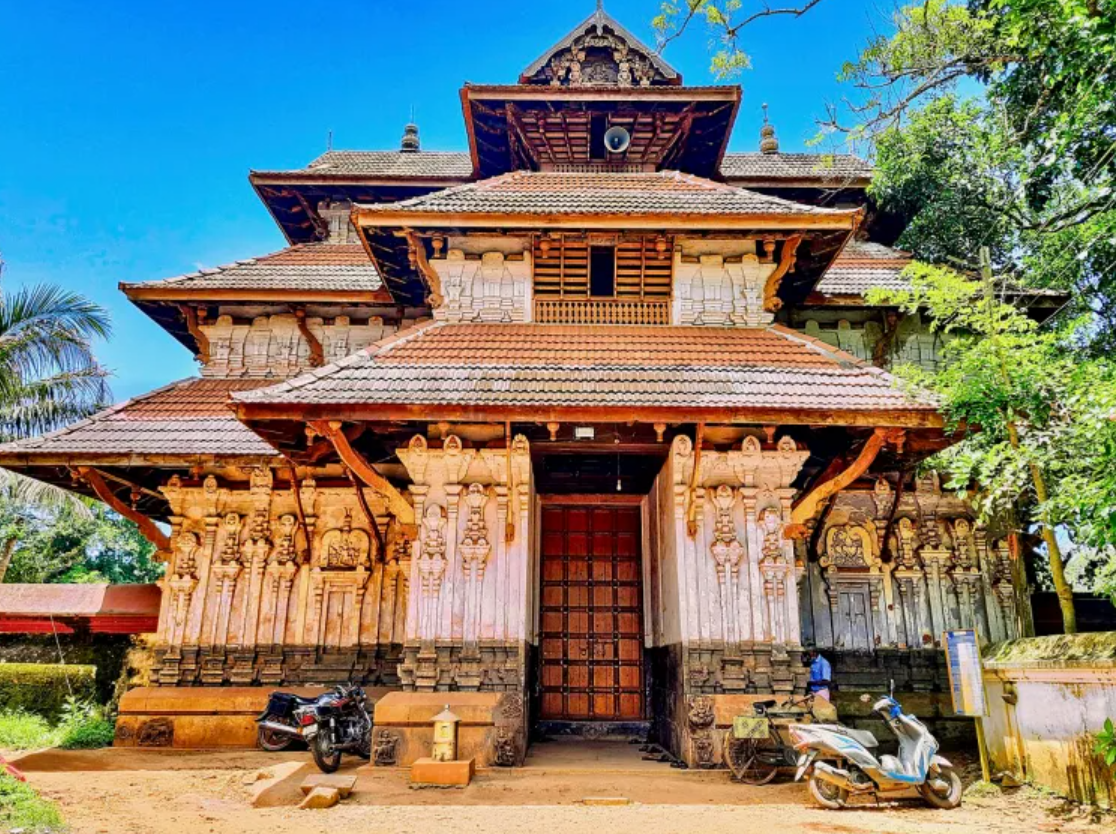The known history of Kerala begins with the Chera dynasty, with the Shiva of the Tiruvanchikulam Siva Temple being their tutelary deity. Kerala’s history is broadly divided into four epochs, the first of which is the Vanchi Epoch. During the Sangam period, Tiruvanchikulam was known as Vanji. Historians such as Dr. S. Krishna Swamy Iyengar and K.G. Sesha Iyer has identified Vanchi with Tiruvanchikulam. The 27 Sangam poets have praised the Cheras, and it is believed that they visited this temple and the nearby Cheraman Palace in ancient times.
Cheraman Perumal, the legendary king of Kerala, is believed to have journeyed to Kailasa with his companion, the Saiva saint Sundaramoorthi Nayanar, from the temple. This event is still celebrated by the Tamil community on the Swathi asterism day of the Malayalam month Karkatakam. According to Tamil Saiva traditions, Tiruvanchikulam is considered the only Saiva Tirupati temple in Kerala.
For centuries, the temple served as an administrative center for the kingdoms of Kochi and the Zamorins of Calicut. Currently, it is under the administration of the Cochin Devaswom Board. Traditional stories tell that the sword of the Zamorin, believed to have been gifted to him by Cheraman Perumal, was burned when the Dutch attacked the temple in 1670 CE. Evidence of this attack is found in the two basements of the temple towers on the western side, indicating that the Gopurams were destroyed. Additionally, there are records of invasions during the period of Tippu Sultan. In the Namskara Mandapa, an inscription written in Malayalam script reveals that the temple was damaged by a ‘Sasthra Bahya’ and later renovated under the leadership of Paliyath Govindan Achan, the chief minister of the Kochi Kingdom.
The present structure of the temple was built after the attack in 1801 CE, and the Shiva Linga enshrined at that time was brought from Chidambaram, Tamil Nadu. The two-storied sanctum sanctorum is square-shaped and faces east, towards the river, which in ancient times was very close to the temple. The aspect of Shiva in this temple is believed to be Sadasiva, the highest manifestation of Shiva.
The Arattu festival is conducted in the Arabian Sea, about 6 kilometers from the temple, and continues to be celebrated today. The temple also hosts the largest number of sub-gods and worship is conducted five times a day. A distinctive feature of the temple is the Palliyara, or sleeping chamber. After the evening worship services, around 8 PM, the deities of the temple are taken in a procession to the Palliyara, where the God and Goddess are placed in a chamber with a cot, bed, and pillows. The deities are then returned to the sanctum sanctorum the following morning. Youngsters wishing for a good spouse also participate in this Palliyara procession and worship the deities in the chamber. This practice is especially crowded on full moon days. The Palliyara feature is unique to this temple and is not seen in any other Kerala temples. As a result, the temple’s worship pattern is known as Pradesa Sampradaya.
Additionally, the temple has ancient connections with the Kodungallur Kurumbha Bhagavathy Temple. During the Bharani festival of the Bhagavathy temple, pilgrims traveling to the festival often visit Tiruvanchikulam Temple, continuing a long-standing tradition.
Administration History :
The administration of the Thiruvanchikulam Shiva Temple has a rich history that dates back to ancient times. Historically, the temple was an important religious and cultural center under the rule of the Cheraman Perumal dynasty, with King Cheraman Perumal himself contributing to its construction. Over the centuries, the temple witnessed various invasions, including the Dutch attack in 1670 CE and the Mysorean invasions led by Tipu Sultan, which caused significant damage to the temple. The temple was subsequently restored in 1801 CE under the leadership of Paliyath Achan, the Chief Minister of the Kochi Kingdom. During the colonial and post-colonial periods, the temple came under the administrative control of different local authorities. In the present day, the temple is managed by the Cochin Devaswom Board, which oversees its rituals, festivals, and day-to-day activities, ensuring the continuity of its religious significance.
